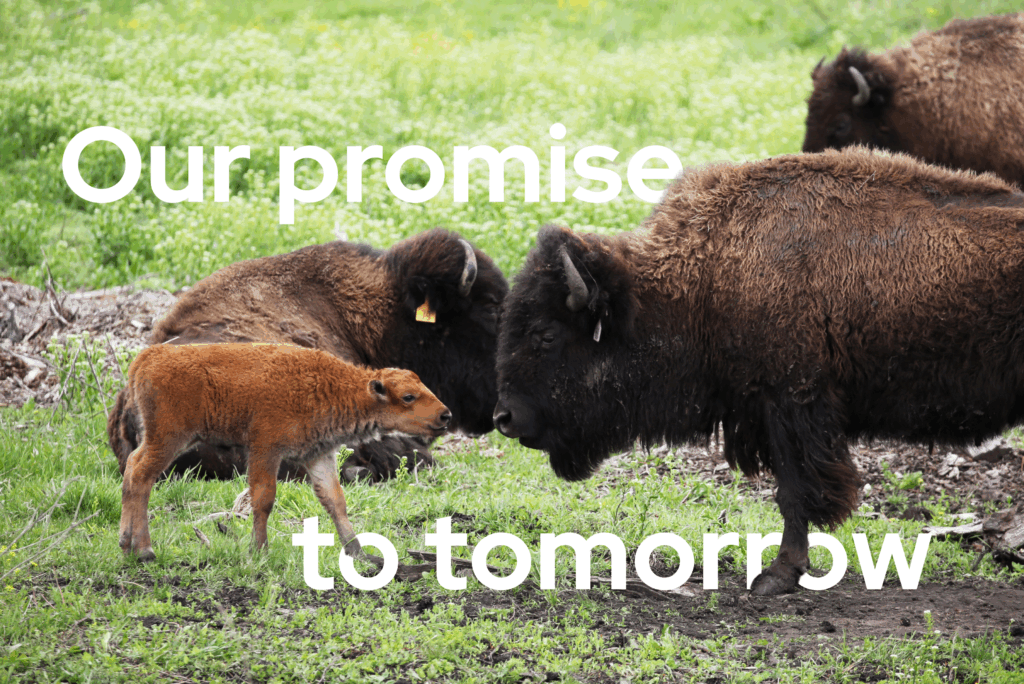We live in an interconnected system where restored ecosystems and biodiversity play a crucial role in shaping our health and future. Unfortunately, biodiversity in our region and across the globe is declining due to habitat loss, invasive species, and unchecked development.
One measure of successfully restored ecosystems is the return and growth of native wildlife. Northeastern Illinois and the surrounding region boast rich biodiversity thanks to its varied microclimates and habitats. Openlands and our partners conduct ongoing species inventories, monitoring, and research to ensure native species are rebounding. The following is a selection of iconic species found in restored ecosystems in our region. Use our Get Outside Map to see where Openlands has carried out restoration work in our region.
Birds in restored ecosystems
Bobolink (Dolichonyx oryzivorus)
Conservation Status: Illinois Species of Greatest Conservation Need
Habitat: Grasslands, wetlands, shrublands, savannas
Distinguishing features: Females have yellow feathers with dark stripes on the head and males have black and white plumage and often described as wearing a “backward tuxedo”; known for their bubbly, complex song
Henslow’s Sparrow (Centronyx henslowii)
Conservation Status: Illinois Species of Greatest Conservation Need
Habitat: Dense grasslands, wetlands
Distinguishing features: Small sparrow with olive-colored head, streaked back, and a short tail; truncated chirp
Sandhill Crane (Antigone canadensis)
Conservation Status: Illinois Species of Greatest Conservation Need
Habitat: Marshes, bogs, prairies
Distinguishing Features: Tall gray bird with a red crown; known for their loud, bugling call, mating dances, and immense migrating flocks
Reptiles and amphibians in restored ecosystems
Blanding’s Turtle (Emydoidea blandingii)
Conservation Status: State endangered
Habitat: Marshes, bogs, lakes, and streams; need ample aquatic vegetation
Distinguishing features: Bright yellow chin and throat; domed shell with dark coloring and yellow spots
Slender Glass Lizard (Ophisaurus attenuatus)
Conservation Status: Illinois Species of Greatest Conservation Need
Habitat: grasslands with dry, well-drained soils
Distinguishing features: Thin, legless, and snake-like; tan and dark brown stripes extending from snout to tail.
Wood Frog (Lithobates sylvaticus)
Conservation Status: Illinois Species of Greatest Conservation Need
Habitat: Forested wetlands
Distinguishing features: Brown or tan body with a dark “mask” extending from the eye to the eardrum
Mammals, insects, and mollusks in restored ecosystems
Northern Long-Eared Bat (Myotis septentrionalis)
Conservation Status: Federally endangered
Habitat: Forested areas and caves for hibernation
Distinguishing features: Medium-sized bat with long ears and brown fur
Hine’s Emerald Dragonfly (Somatochlora hineana)
Conservation Status: Federally endangered
Habitat: Wetlands, dolomite prairie
Distinguishing features: Iridescent emerald eyes and thorax with two yellow strips on its sides.
Black Sandshell Mussel (Ligumia recta)
Conservation Status: Illinois Species of Greatest Conservation Need
Habitat: Clean, fast-flowing rivers and lakes with firm gravel or sand substrates
Distinguishing features: Elongated black shell with greenish streaks
Plants in restored ecosystems
Leafy Prairie Clover (Dalea foliosa)
Conservation Status: Federally endangered
Habitat: Open grasslands with thin, calcareous soils; dolomite prairie
Distinguishing features: Upright plant with delicate purple flowers and narrow, leafy stems
Oklahoma Grass Pink Orchid (Calopogon oklahomensis)
Conservation Status: State endangered
Habitat: Dry prairies, meadows, pine and oak savannas
Distinguishing features: Pale to deep pink flowers, 4-14 inches tall with smooth slender stalks.
White Oak (Quercus alba)
Conservation Status: Abundant but regionally declining
Habitat: Upland forests and savannas
Distinguishing features: Majestic tree with light gray bark, lobed leaves, and a critical role in oak ecosystem recovery efforts; Illinois state tree
About conservation status classifications
Illinois Species of Greatest Conservation Need: Species with low and declining populations that require conservation action to prevent further declines.
Federally Endangered: Species designated by the U.S. Fish and Wildlife Service or the National Marine Fisheries Service as being in imminent danger of extinction under the federal Endangered Species Act.
State Endangered: Species identified as being in imminent danger of extinction under State Endangered Species Acts. These designations often address regional concerns and fill gaps not covered by federal protection.

